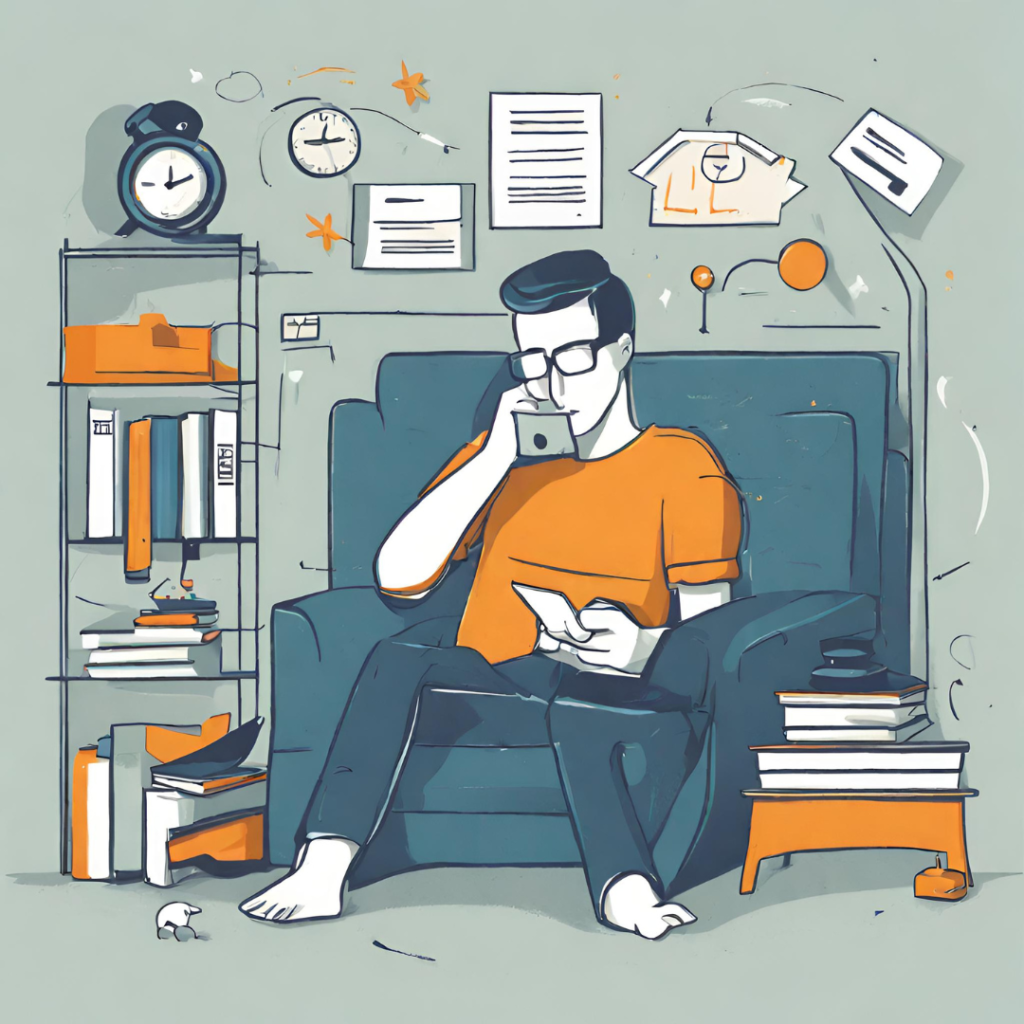In today’s high-pressure environment, uncovering innovative solutions to complex challenges is crucial. An often overlooked but effective strategy in this cognitive endeavor is napping for creativity. Far from being a sign of laziness, strategic napping can be a secret weapon for enhancing mental agility and sparking creativity. This article explores the interplay between napping and creative problem-solving, revealing how a brief period of rest can lead to breakthroughs in thinking.
The Science Behind Sleep and Creativity
The link between sleep and creativity begins with an understanding of sleep cycles, especially the Rapid Eye Movement (REM) phase. REM sleep, known for rapid eye movements and vivid dreams, is fertile ground for the brain’s creative processes. During this phase, the brain forms unique connections between ideas, fundamental to creative thinking. Studies show that individuals who engage in enhancing creativity through napping, particularly those experiencing REM sleep, demonstrate improved problem-solving skills. This enhancement is attributed to the brain’s ability to reorganize and synthesize knowledge in novel ways during sleep.
Understanding Creative Problem Solving
Creative problem solving is not just about lateral thinking; it’s about forging new paths in thought. It’s a blend of imagination, intuition, and logic to devise novel solutions. In today’s world, creative thinking is essential across various fields, not just in the arts but in business, technology, and everyday life challenges. Creative problem solving with naps offers a nonlinear, often unpredictable approach to thinking, facilitating leaps in logic and connecting dots in unusual patterns.
The Role of Naps in Boosting Creativity
The role naps play in enhancing creativity lies in the unique activities of the brain during sleep. When we nap, and particularly when we enter REM sleep, our brain engages in complex activities crucial for creative thinking. Techniques like napping for creative insights have shown that naps facilitate a more fluid and associative form of thinking, allowing the subconscious mind to explore and synthesize ideas without the logical barriers present during wakefulness.
Synthesis of Disparate Ideas
One hallmark of creativity is the ability to link seemingly unrelated concepts. Naps, especially those reaching the REM stage, enhance this ability. This is because REM sleep fosters a more fluid form of thinking, essential for boosting creative thinking with napping. It allows the mind to transcend conventional logic, creating novel connections.

Enhancement of Insightful Thinking
Naps also contribute to insightful thinking, often characterized as the “aha” moment when a solution suddenly becomes clear. This type of realization is more likely to occur after waking from a nap, as the mind is refreshed and views problems from different perspectives. Napping techniques for creative insights help the brain disregard irrelevant information, crucial for innovative solutions.
Cognitive Flexibility
Cognitive flexibility – the ability to adapt thinking to new and unexpected circumstances – is closely tied to creative problem-solving. Napping has been linked to increased cognitive flexibility, enabling individuals to shift perspectives and consider alternative solutions. Naps as a tool for creativity play a significant role in enhancing this mental agility.
Memory Integration and Reorganization through Napping
Napping is not just a pause from daily activities; it’s a time when the brain actively integrates new information with existing knowledge. This process is crucial for sparking creative insights. By consolidating memories in unique ways, napping provides a platform for the emergence of innovative ideas, making napping techniques for creative insights an essential part of cognitive development.
Relaxation and Stress Reduction for Creativity
Stress can significantly impede creative thinking. Napping offers a natural way to alleviate stress, promoting relaxation and thereby creating a mental environment more conducive to divergent thinking. This relaxation effect of napping, enhancing creativity through napping, is crucial for maintaining an open mind, a prerequisite for creative ideation and problem-solving.
Dream Incubation for Creative Solutions
Utilizing naps for dream incubation is a technique where problems are contemplated before sleep with the intention of solving them through dream insights. While not everyone remembers their dreams, those who practice this technique often find that their subconscious mind works on creative solutions during naps, leading to innovative ideas upon waking, a unique aspect of innovative solutions through napping.

Comparing Napping with Other Creativity-Enhancing Methods
While napping is a powerful tool for enhancing creativity, it’s not the only method. Techniques like meditation and brainstorming sessions also stimulate creative thinking. However, napping stands out for its ability to rapidly refresh the brain and facilitate unconscious thought processes, offering a passive yet effective approach to fostering creative insights.
Strategies for Effective Napping
To maximize the benefits of napping for creativity, consider the following strategies:
- Timing Your Naps: Opt for early afternoon naps, aligning with the body’s natural circadian rhythms.
- Create a Restful Environment: A quiet, comfortable place enhances the quality of your nap.
- Keep It Short: Limit naps to 20-30 minutes to avoid sleep inertia and maximize the restorative benefits.
- Use a Timer: This ensures you wake up refreshed and ready to tackle creative challenges.
- Relax Your Mind: Engage in relaxation techniques before napping to ease into sleep quickly.
Success Stories: Napping and Creativity in Action
The concept of napping as a catalyst for creativity is not just theoretical; it has been practiced by many successful individuals. For example, artists like Salvador Dali and inventors like Thomas Edison used naps to boost their creativity and problem-solving skills. In the corporate world, companies like Google have recognized the link between napping and innovation, providing employees with nap pods. These real-world success stories highlight the transformative impact of napping on creative problem-solving and productivity.
Conclusion: Embracing Napping for Enhanced Creative Thinking
Incorporating strategic napping into your routine can revolutionize your approach to creative problem-solving. Napping for creativity is more than just rest; it’s a tool for cognitive rejuvenation and innovative thinking. Embrace napping not as a sign of weakness but as a vital component of your creative process. By allowing your brain to rest and subconsciously process information, you open up new avenues for innovation and creative breakthroughs.


